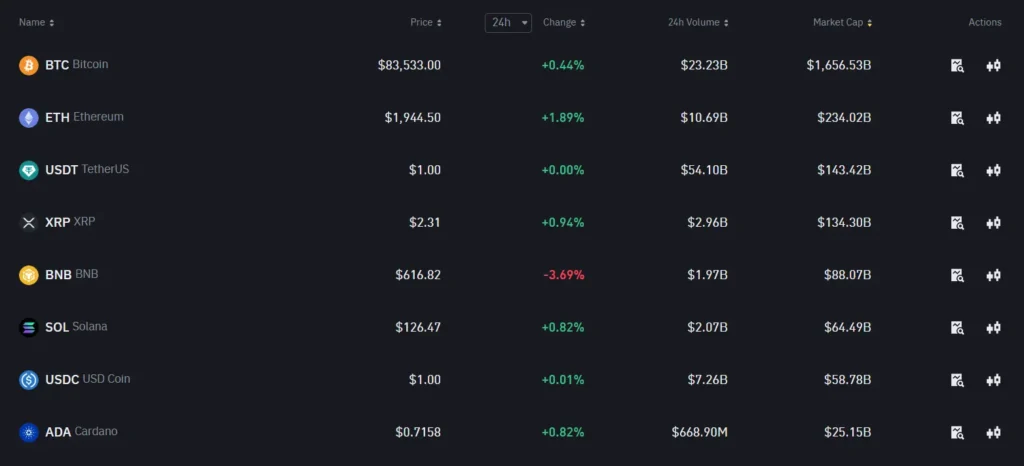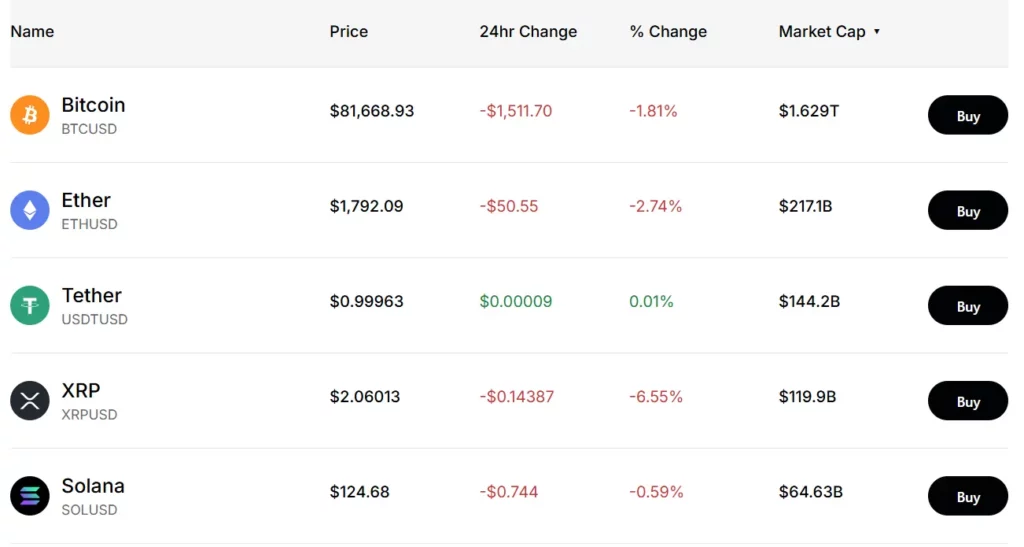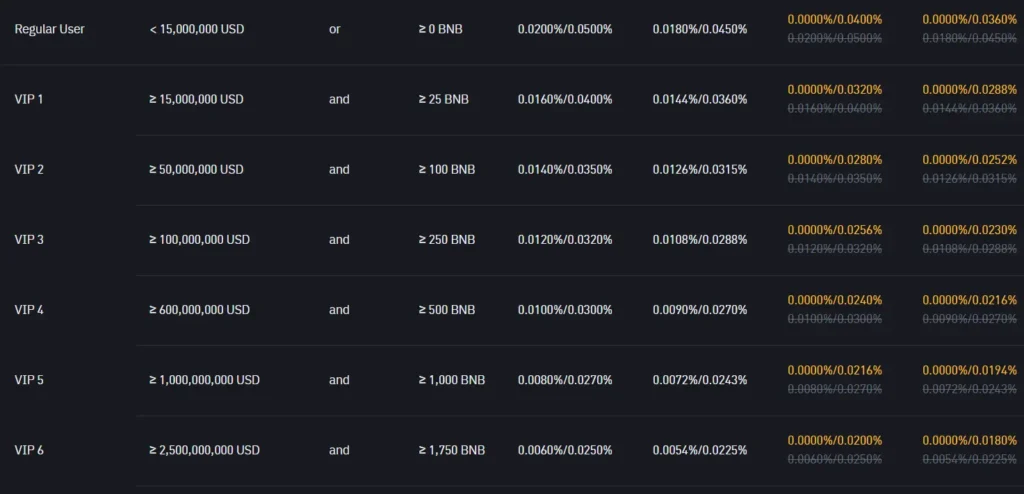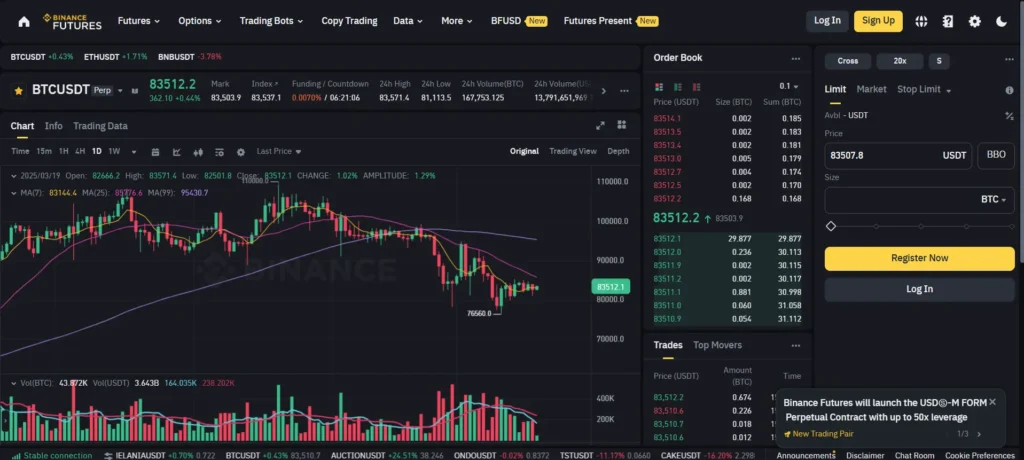Looking for the right crypto exchange can feel overwhelming. With so many options available, it’s important to compare platforms that meet your trading needs.
Binance US typically offers lower trading fees than Gemini, with a larger selection of cryptocurrencies, while Gemini focuses more on security and regulatory compliance. This key difference helps you decide which platform might work better for your specific goals.
When choosing between these exchanges, you’ll want to consider what matters most to you. Binance US might appeal if you’re seeking variety and lower costs. Gemini could be your pick if you value a user-friendly experience with strong security measures. Both platforms offer the major cryptocurrencies like Bitcoin and Ethereum, but they differ in important ways that can affect your trading experience.
Binance vs Gemini: At A Glance Comparison
When choosing between Binance and Gemini, several key differences stand out. Both exchanges offer cryptocurrency trading but with distinct approaches.
Overall Rating:
- Gemini: 9.0/10
- Binance: Lower score than Gemini
Cryptocurrency Selection:
| Exchange | Selection |
|---|---|
| Binance | Vast variety |
| Gemini | More limited |
- Fees: Binance offers more competitive fee structures for traders. This makes it attractive if you trade frequently or in large volumes.
- Security: Gemini has stronger security measures in place. If keeping your crypto assets safe is your top priority, this gives Gemini an edge.
- Regulatory Compliance: Gemini excels in regulatory compliance compared to Binance. This means better protection under financial regulations in the US and other regions.
- Trading Features: Binance provides more advanced trading tools and features for experienced traders. You’ll find more sophisticated options for technical analysis and trading strategies.
- User Experience: Both platforms offer different user experiences. Binance caters to more advanced traders, while Gemini tends to be more beginner-friendly.
Your choice between these exchanges should depend on your specific needs. Consider how important factors like security, fees, and available cryptocurrencies are to your trading strategy.
Binance vs Gemini: Trading Markets, Products & Leverage Offered
Binance offers you access to over 350 cryptocurrencies for trading, significantly more than Gemini’s selection of around 100 digital assets. This wider variety gives you more options if you’re interested in altcoins and newer tokens.
Both exchanges support spot trading, but Binance provides more advanced products. You can access futures trading, options, and leveraged tokens on Binance.
Trading Products Comparison:
| Feature | Binance | Gemini |
|---|---|---|
| Spot Trading | ✓ | ✓ |
| Futures Trading | ✓ | ✗ |
| Options | ✓ | ✗ |
| Staking | ✓ | ✓ |
| NFT Marketplace | ✓ | ✓ |
Binance allows you to trade with leverage up to 125x on certain pairs, which can amplify your potential gains (and losses). Gemini doesn’t offer leveraged trading directly on its platform.
Gemini’s Earn program lets you earn interest on your crypto holdings, with rates varying by asset. This is helpful if you prefer holding rather than active trading.
Trading pairs are more abundant on Binance, with thousands of combinations available. You’ll find more fiat currencies supported for direct trading as well.
If you’re interested in NFTs, both platforms offer marketplaces, though Binance NFT typically has higher trading volumes and more collections.
Binance vs Gemini: Supported Cryptocurrencies
When choosing between Binance and Gemini, the number of available cryptocurrencies is an important factor to consider.
Binance offers a significantly larger selection of cryptocurrencies. The standard international Binance platform supports over 600 different cryptocurrencies for trading.

Binance US, which serves American customers, offers fewer options than the international version but still supports over 150 cryptocurrencies.
Gemini provides access to approximately 100 cryptocurrencies. While this is fewer than Binance, Gemini focuses on carefully selecting cryptocurrencies that meet their security and compliance standards.
Here’s a quick comparison:
| Exchange | Number of Cryptocurrencies |
|---|---|
| Binance (International) | 600+ |
| Binance US | 150+ |
| Gemini | 100+ |
If you’re looking for more exotic or newer altcoins, Binance will likely have what you need. Their extensive selection gives you more trading opportunities and diversification options.

Gemini’s more curated approach means you’ll find established cryptocurrencies with stronger track records. This can be beneficial if you prefer focusing on more established assets.
Your choice should depend on your trading goals. If variety matters most to you, Binance has the advantage. If you prefer quality over quantity with stronger regulatory compliance, Gemini might be the better fit despite offering fewer options.
Binance vs Gemini: Trading Fee & Deposit/Withdrawal Fee Compared
When comparing Binance US and Gemini, fees are a key factor for your decision. Binance US typically offers lower trading fees, making it a better choice for active traders.

Binance US charges up to 0.40% per trade, while Gemini’s fees can go up to 1%. This difference can save you money if you trade often.
For withdrawal fees, Gemini stands out by charging only network fees with no additional costs. Binance US, on the other hand, may charge up to $60 for some withdrawals.
Trading Fee Comparison:
| Exchange | Trading Fees |
|---|---|
| Binance US | Up to 0.40% |
| Gemini | Up to 1.00% |
Withdrawal Fee Comparison:
| Exchange | Withdrawal Fees |
|---|---|
| Binance US | Up to $60 |
| Gemini | Network fees only |
Deposit fees are usually lower than withdrawal fees on both platforms. Each exchange offers cheaper fees for certain crypto networks but more expensive ones for others.
Payment methods also affect your costs. Both platforms accept credit cards like MasterCard, but fees may vary depending on your payment choice.
Remember that Binance US scores higher overall on fees according to most comparisons. Your specific needs will determine which platform offers better value for you.
Binance vs Gemini: Order Types
When trading cryptocurrency, the types of orders available can impact your trading strategy. Both Binance and Gemini offer various order types, but with notable differences.
Binance Order Types:
- Market orders
- Limit orders
- Stop-limit orders
- OCO (One-Cancels-the-Other)
- Trailing stop orders
- Post-only orders
Binance provides a more extensive range of order types, making it suitable for advanced traders who need precise control over their trades. You can use trailing stops to lock in profits as prices move favorably.
Gemini Order Types:
- Market orders
- Limit orders
- Stop-limit orders
- Maker-or-cancel orders
Gemini offers fewer order types but covers the essentials for most traders. Their interface is generally more straightforward, which may benefit beginners.
Both exchanges support the fundamental order types (market, limit, stop-limit), but Binance’s additional options like OCO orders give you more flexibility for complex trading strategies.
You might find Binance’s order system better if you’re an active trader who needs advanced order execution. Meanwhile, Gemini’s simpler approach might work well if you prefer straightforward trading without complicated options.
The execution speed for orders on both platforms is generally reliable, though it can vary during high market volatility periods.
Binance vs Gemini: KYC Requirements & KYC Limits
Both Binance and Gemini require Know Your Customer (KYC) verification to comply with financial regulations. However, they differ in their approach and requirements.
Gemini takes a more stringent approach to regulatory compliance compared to Binance. This focus on compliance is one of Gemini’s strengths in the cryptocurrency exchange market.
Binance KYC Requirements:
- Photo ID
- Personal information (name, address)
- Basic verification allows limited trading
- Full verification increases withdrawal limits
Binance US specifically requires photo identification, address verification, and personal details before you can start trading.
Gemini KYC Requirements:
- Government-issued ID
- Proof of address
- Facial verification
- All accounts require full verification before trading
Gemini has built its reputation on strong security and regulatory compliance. Their KYC process is more thorough but provides you with greater security assurances.
The verification process on Gemini may take longer than on Binance, but this reflects their commitment to meeting regulatory standards.
KYC Limits Comparison:
| Feature | Binance | Gemini |
|---|---|---|
| Verification Tiers | Multiple levels | Single comprehensive verification |
| Trading Without KYC | Limited functionality | Not available |
| Verification Time | Generally faster | May take longer |
| Withdrawal Limits | Increases with verification level | Higher standard limits after verification |
Your choice between these platforms may depend on how quickly you need to start trading and your comfort with sharing personal information.
Binance vs Gemini: Deposits & Withdrawal Options
Binance US and Gemini offer different ways to deposit and withdraw your funds. Understanding these options can help you choose the exchange that works best for your needs.
Deposit Methods
Both platforms support bank transfers (ACH) and wire transfers. Gemini also accepts debit card payments, making it easy to buy crypto quickly.
Binance US typically processes deposits faster, but Gemini offers more payment options for US customers.
Withdrawal Options
Gemini stands out by offering free withdrawals for cryptocurrencies. This can save you money if you frequently move your assets off the exchange.
Binance US charges variable withdrawal fees based on the cryptocurrency. These fees can range up to $60 depending on the network and token.
Processing Times
Bank withdrawals typically take 1-5 business days on both platforms. Crypto withdrawals are usually processed within minutes, though network congestion can cause delays.
You’ll find that Gemini processes withdrawals more consistently, while Binance US sometimes has temporary delays during high-volume periods.
Limits
Your withdrawal limits depend on your verification level. Both exchanges require identity verification for higher limits, but Gemini typically offers higher initial limits for new users.
Binance vs Gemini: Trading & Platform Experience Comparison

Binance offers a more complex trading interface with advanced charting tools and order types. You’ll find features like limit, market, stop-limit orders, and trading view charts that appeal to experienced traders.
Gemini provides a cleaner, more intuitive platform that’s easier to navigate for beginners. Their dashboard is straightforward while still offering essential trading functions.
Trading Features Comparison:
| Feature | Binance | Gemini |
|---|---|---|
| User Interface | Complex, feature-rich | Clean, intuitive |
| Mobile App | Comprehensive | Streamlined |
| Order Types | Extensive | Basic but sufficient |
| Charting Tools | Advanced | Intermediate |
Binance supports over 350 cryptocurrencies, giving you significantly more trading options. Gemini’s selection is more limited with around 100 coins, but they carefully vet each listing.
The Binance mobile app mirrors much of the desktop functionality, making it powerful but potentially overwhelming. Gemini’s mobile experience focuses on simplicity and ease of use.
Trading volumes are much higher on Binance, which can lead to better liquidity and tighter spreads for popular trading pairs. This matters if you trade large amounts or need quick executions.
Gemini’s ActiveTrader platform provides a more advanced experience for serious traders, including multiple order types and deeper market data. However, it still doesn’t match Binance’s depth of features.
Both platforms offer API access for automated trading, though Binance provides more comprehensive documentation and capabilities.
Binance vs Gemini: Liquidation Mechanism
When trading on margin or futures platforms, understanding how exchanges handle liquidations is crucial for your risk management strategy.
Binance’s Liquidation Process
Binance uses a tiered liquidation mechanism. When your position approaches the liquidation price, Binance first issues margin calls as warnings. If you can’t add more funds, the system begins partial liquidations to reduce position size gradually before full liquidation.
Binance also employs an Insurance Fund to help manage the liquidation process and prevent sudden market impacts.
Gemini’s Liquidation Approach
Gemini takes a more conservative approach to liquidations. Their system monitors positions closely and may liquidate positions more quickly when they reach threshold levels.
Gemini puts stronger emphasis on protecting their platform from negative balances, which can sometimes result in earlier liquidations compared to Binance.
Key Differences
| Feature | Binance | Gemini |
|---|---|---|
| Warning System | Multiple margin calls | Limited warnings |
| Liquidation Style | Gradual/partial liquidations | More immediate liquidations |
| Insurance Fund | Robust system | Less transparent details |
| User Control | More liquidation prevention tools | Fewer intervention options |
You’ll find more advanced liquidation prevention tools on Binance, including stop-loss options and risk management features that help you avoid reaching liquidation points.
For newer traders or those with lower risk tolerance, Gemini’s stricter approach might provide better safeguards against severe losses.
Binance vs Gemini: Insurance
When choosing a crypto exchange, understanding insurance protection is essential for your assets’ safety. Both Binance and Gemini offer different approaches to insurance coverage.
Gemini provides FDIC insurance for USD deposits up to $250,000 per customer. This means your cash holdings (not cryptocurrency) are protected if the exchange faces financial troubles.
Additionally, Gemini maintains a comprehensive insurance policy for digital assets held in their hot wallet through Aon. This gives you an extra layer of protection against potential security breaches.
Binance’s insurance approach differs. They maintain a Secure Asset Fund for Users (SAFU), which acts as an emergency insurance fund. This fund holds approximately $1 billion to protect users in case of security breaches.
However, Binance doesn’t offer FDIC insurance for USD deposits like Gemini does. This is an important distinction if you plan to keep fiat currency on the platform.
Insurance Comparison
| Feature | Gemini | Binance |
|---|---|---|
| FDIC Insurance | Yes (up to $250,000) | No |
| Crypto Insurance | Yes (hot wallet) | Yes (SAFU fund) |
| Insurance Provider | Aon | Self-maintained fund |
Your risk tolerance and the types of assets you’ll store should influence which insurance model better suits your needs.
Binance vs Gemini: Customer Support
When choosing a crypto exchange, customer support can make a big difference in your experience. Both Binance and Gemini offer support options, but they differ in quality and availability.
According to user reviews, Binance’s customer support receives mixed feedback. Some users report slow response times and difficulty getting issues resolved. The platform offers support through email tickets and a chat system.
Gemini, on the other hand, is often praised for more responsive customer service. They provide email support, a help center with detailed articles, and phone support for certain account issues.
Based on search results, reviewers generally prefer Binance for ongoing product support features. However, when it comes to resolving specific problems, many users find Gemini more helpful.
If you’re new to cryptocurrency trading, strong customer support might be especially important. Consider how you prefer to get help—through chat, email, or phone—when making your choice.
Response times can vary for both platforms depending on the complexity of your issue and current demand. During market volatility or high-volume periods, support wait times typically increase for both exchanges.
Neither platform offers 24/7 live phone support, which is worth noting if immediate assistance is important to you.
Binance vs Gemini: Security Features
When choosing a crypto exchange, security should be your top priority. Both Binance and Gemini have strong security measures, but they differ in some important ways.
Gemini stands out with its SOC 2 Type 2 certification, showing their commitment to security. They also use offline cold storage for most customer funds, keeping your crypto away from potential online threats.
Binance protects users with their Secure Asset Fund for Users (SAFU), which acts as an emergency insurance fund. This fund helps protect your assets if something goes wrong.
Both exchanges offer two-factor authentication (2FA) to secure your account. This extra layer of protection requires something you know (password) and something you have (like your phone) to log in.
Gemini has earned a reputation for strong regulatory compliance, especially in the US market. This focus on following rules adds another layer of security for your investments.
Binance uses advanced encryption technologies to protect your data and transactions. Their security team constantly monitors for suspicious activities.
Key Security Features Comparison:
| Feature | Binance | Gemini |
|---|---|---|
| Two-Factor Authentication | ✓ | ✓ |
| Cold Storage | ✓ | ✓ |
| Insurance Fund | SAFU | Not specified |
| Regulatory Compliance | Good | Excellent |
| Special Certification | Not specified | SOC 2 Type 2 |
Choose Gemini if regulatory compliance is your main concern. Pick Binance if you want the protection of their dedicated insurance fund.
Is Binance Safe & Legal To Use?
Binance is generally considered safe and operates legally in many countries. However, its legal status varies depending on where you live.
In the United States, Binance.US (the American version) is registered with FinCEN and operates legally in most states. Some states have restrictions, so check if your state allows Binance before signing up.
Binance uses several security measures to protect your funds:
- Two-factor authentication (2FA)
- Address whitelisting
- Anti-phishing codes
- Cold storage for most cryptocurrency assets
- SAFU fund (Secure Asset Fund for Users) to protect against hacks
Despite these protections, Binance has faced regulatory challenges in different countries. In 2021, several countries issued warnings about Binance’s operations. The company has worked to address these concerns by improving compliance procedures.
When using Binance, always enable all security features. Create a strong password and use authentication apps instead of SMS verification when possible.
Remember that no exchange is 100% safe from hacks. Only keep trading funds on the exchange and move larger holdings to a secure wallet.
Before using Binance, check its current legal status in your country. Regulations can change quickly in the cryptocurrency space.
Is Gemini Safe & Legal To Use?
Gemini is both legal and safe to use in the United States. It operates as a regulated cryptocurrency exchange that complies with U.S. financial laws and regulations.
Safety is one of Gemini’s strongest features. The platform employs advanced security protocols to protect your digital assets and personal information. This includes two-factor authentication (2FA) for account access and cold storage for the majority of cryptocurrencies.
Gemini has earned a reputation for its commitment to regulatory compliance. The exchange is licensed in multiple states and undergoes regular third-party audits to verify its security standards.
Your funds on Gemini are protected by industry-standard security measures. The platform stores most cryptocurrency in offline cold storage vaults, which helps protect against online threats and potential hacks.
Key Safety Features of Gemini:
- Two-factor authentication (2FA)
- Cold storage for most assets
- Regular security audits
- FDIC insurance on USD deposits (up to $250,000)
- SOC certifications
According to recent information as of March 2025, Gemini continues to maintain its reputation for security. However, some users have expressed concerns about the platform’s long-term stability.
When choosing between Gemini and other exchanges like Binance US, security should be a key consideration. Gemini typically ranks high in security assessments, though Binance US often scores better for user experience.
Frequently Asked Questions
Investors looking at Binance and Gemini often have specific questions about how these exchanges differ. These common questions address fees, security, available cryptocurrencies, support quality, and overall trading experience.
What are the primary differences in fee structures between Binance and Gemini?
Binance typically offers lower trading fees than Gemini. Based on recent data, Binance’s fee structure gives it a significant advantage for cost-conscious traders.
Trading fees on Binance generally range from 0.1% for makers to 0.1% for takers, with potential discounts for high-volume traders or those using BNB tokens.
Gemini charges higher fees in comparison, though they remain competitive against platforms like Coinbase. Their fee structure is tiered based on your monthly trading volume.
How do Binance and Gemini compare in terms of security measures and user safety?
Both exchanges prioritize security, but implement different approaches. Gemini is known for its strong regulatory compliance as a New York trust company.
Gemini offers insurance coverage for digital assets held in their hot wallet system. They also maintain industry-leading security certifications.
Binance emphasizes their SAFU (Secure Asset Fund for Users) which acts as an emergency insurance fund. They also utilize a comprehensive security system with cold storage for most funds.
Which exchange offers a wider variety of cryptocurrencies, Binance or Gemini?
Binance clearly leads in cryptocurrency variety. They offer hundreds of different tokens and coins, including many smaller altcoins and emerging projects.
Gemini focuses on a more curated selection of cryptocurrencies. They prioritize established coins that meet their security and compliance standards.
If you’re seeking niche altcoins or exposure to a wide range of projects, Binance provides significantly more options.
Can users expect better customer support from Binance or Gemini?
Gemini generally receives higher ratings for customer service quality. They offer more personalized support options including phone support in some cases.
Binance has improved their customer service recently, but still relies heavily on ticket-based support systems and community forums to handle user inquiries.
Response times can vary for both platforms depending on market conditions and inquiry complexity.
What are the key factors to consider when choosing between Binance and Gemini for trading?
Your geographic location matters significantly, as Binance has different platforms for different regions with varying features and coin offerings.
Consider your trading volume and frequency. High-volume traders might benefit more from Binance’s lower fees.
Regulatory compliance needs are important too. Gemini may be preferable if you prioritize working with highly regulated exchanges in the US market.
How do Binance and Gemini’s user interfaces and trading experiences compare?
Binance offers more advanced trading tools and charts, making it preferred by experienced traders who want detailed market analysis options.
Gemini provides a cleaner, more intuitive interface that beginners find easier to navigate. Their mobile app is particularly user-friendly.
Both platforms offer basic and advanced trading views, but Binance provides more customization options for serious traders.
Binance vs Gemini Conclusion: Why Not Use Both?
Both Binance and Gemini offer unique advantages that might make using both platforms beneficial for your crypto journey.
Binance stands out with its extensive cryptocurrency selection, supporting over 150 coins compared to Gemini’s approximately 100 options. If you’re looking to diversify into more obscure altcoins, Binance gives you more choices.
Gemini excels in regulatory compliance and security features. This makes it an excellent option for beginners or those particularly concerned about safety in their crypto transactions.
The user experience differs between platforms. Some find Gemini more intuitive and user-friendly, while others prefer Binance’s interface. Your personal preference might lead you to use one platform for daily trading and another for specific functions.
Key comparison points:
- Cryptocurrency selection: Binance (150+) vs Gemini (100)
- Security: Gemini has stronger security measures
- Regulatory compliance: Gemini has better compliance
- User experience: Varies by personal preference
You might consider using Binance for accessing a wider range of cryptocurrencies and potentially lower fees on certain transactions. Meanwhile, Gemini could be your go-to for more secure storage or when dealing with larger transactions.
By utilizing both exchanges, you can leverage the strengths of each platform while minimizing their individual drawbacks. This approach gives you more flexibility in your cryptocurrency activities.
